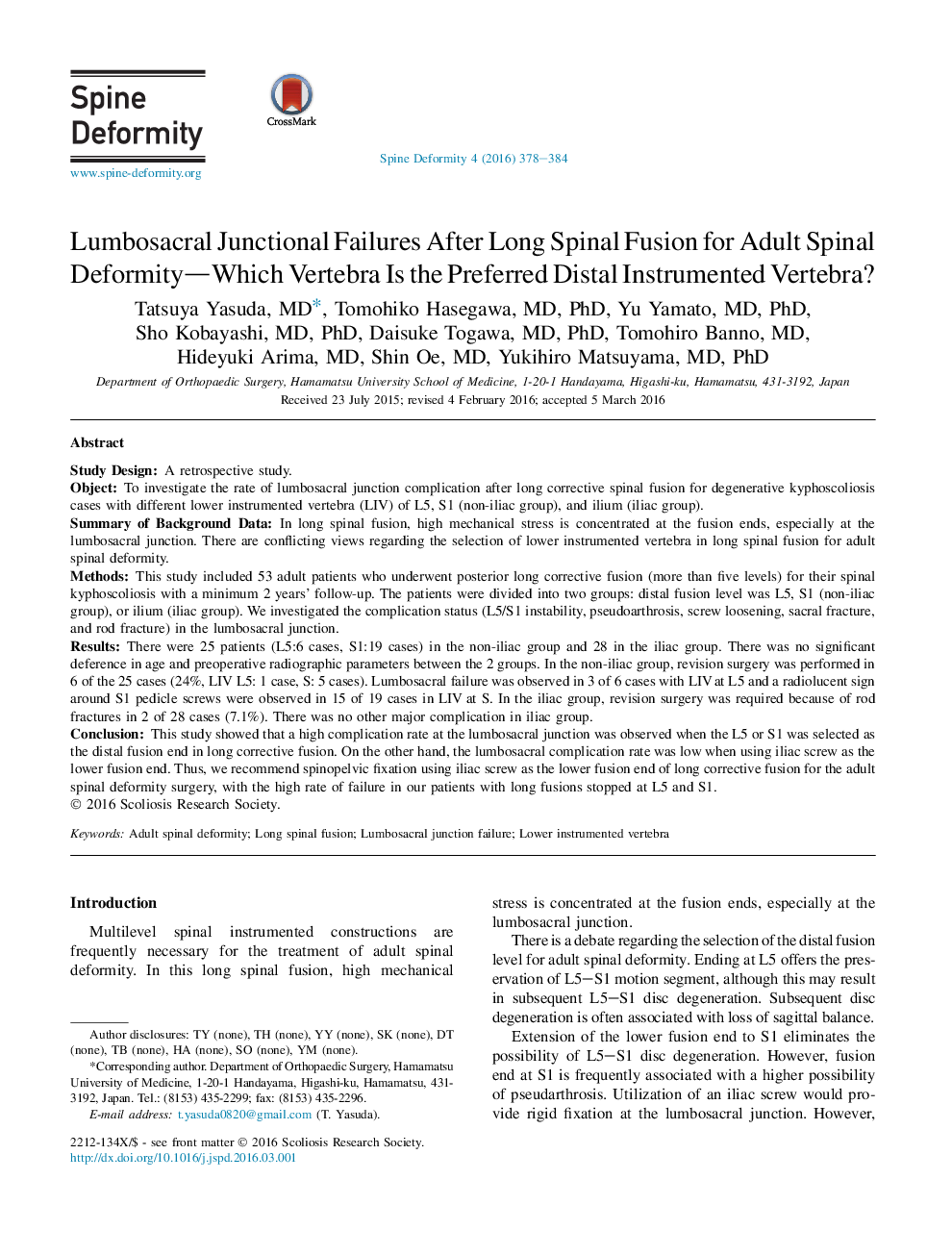| کد مقاله | کد نشریه | سال انتشار | مقاله انگلیسی | نسخه تمام متن |
|---|---|---|---|---|
| 4095201 | 1410979 | 2016 | 7 صفحه PDF | دانلود رایگان |
Study DesignA retrospective study.ObjectTo investigate the rate of lumbosacral junction complication after long corrective spinal fusion for degenerative kyphoscoliosis cases with different lower instrumented vertebra (LIV) of L5, S1 (non-iliac group), and ilium (iliac group).Summary of Background DataIn long spinal fusion, high mechanical stress is concentrated at the fusion ends, especially at the lumbosacral junction. There are conflicting views regarding the selection of lower instrumented vertebra in long spinal fusion for adult spinal deformity.MethodsThis study included 53 adult patients who underwent posterior long corrective fusion (more than five levels) for their spinal kyphoscoliosis with a minimum 2 years' follow-up. The patients were divided into two groups: distal fusion level was L5, S1 (non-iliac group), or ilium (iliac group). We investigated the complication status (L5/S1 instability, pseudoarthrosis, screw loosening, sacral fracture, and rod fracture) in the lumbosacral junction.ResultsThere were 25 patients (L5:6 cases, S1:19 cases) in the non-iliac group and 28 in the iliac group. There was no significant deference in age and preoperative radiographic parameters between the 2 groups. In the non-iliac group, revision surgery was performed in 6 of the 25 cases (24%, LIV L5: 1 case, S: 5 cases). Lumbosacral failure was observed in 3 of 6 cases with LIV at L5 and a radiolucent sign around S1 pedicle screws were observed in 15 of 19 cases in LIV at S. In the iliac group, revision surgery was required because of rod fractures in 2 of 28 cases (7.1%). There was no other major complication in iliac group.ConclusionThis study showed that a high complication rate at the lumbosacral junction was observed when the L5 or S1 was selected as the distal fusion end in long corrective fusion. On the other hand, the lumbosacral complication rate was low when using iliac screw as the lower fusion end. Thus, we recommend spinopelvic fixation using iliac screw as the lower fusion end of long corrective fusion for the adult spinal deformity surgery, with the high rate of failure in our patients with long fusions stopped at L5 and S1.
Journal: Spine Deformity - Volume 4, Issue 5, September 2016, Pages 378–384
